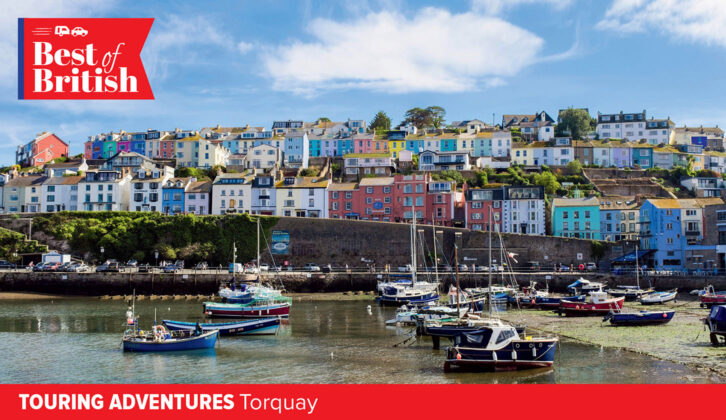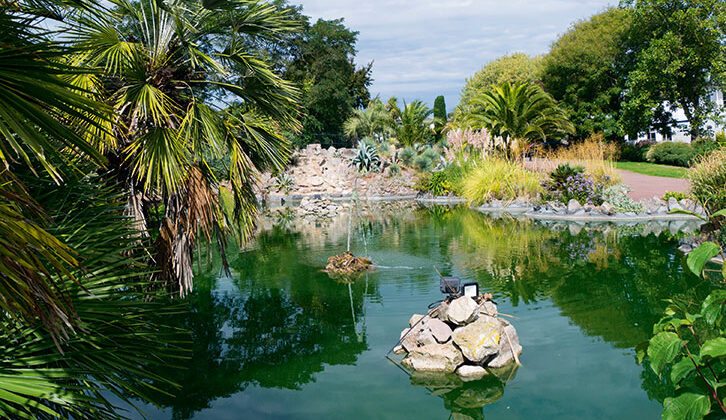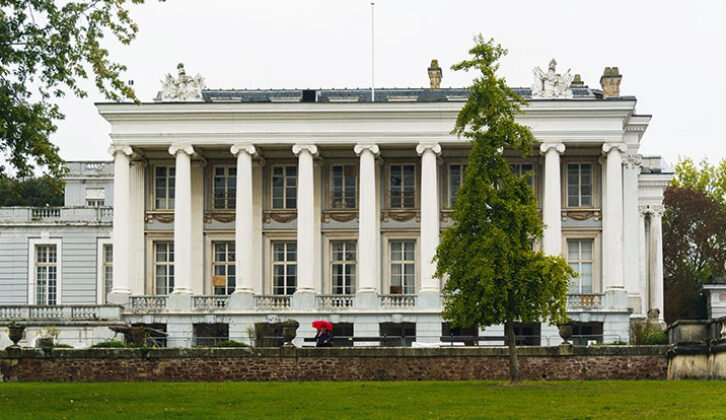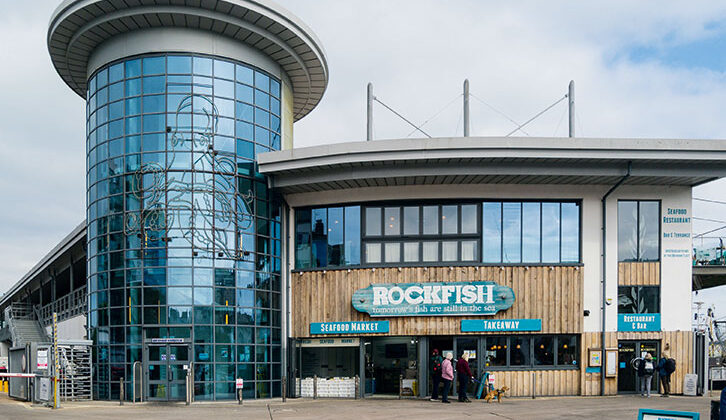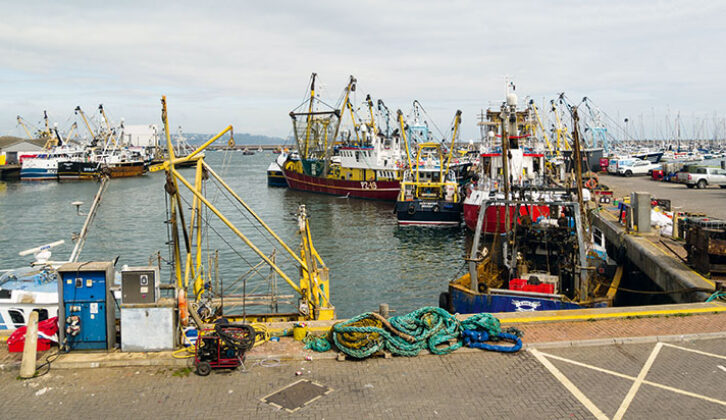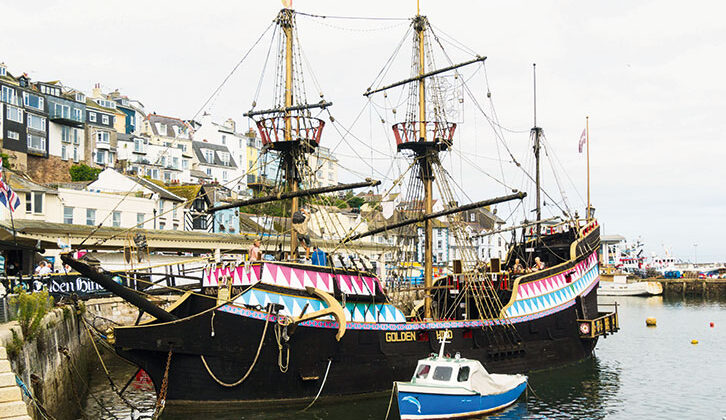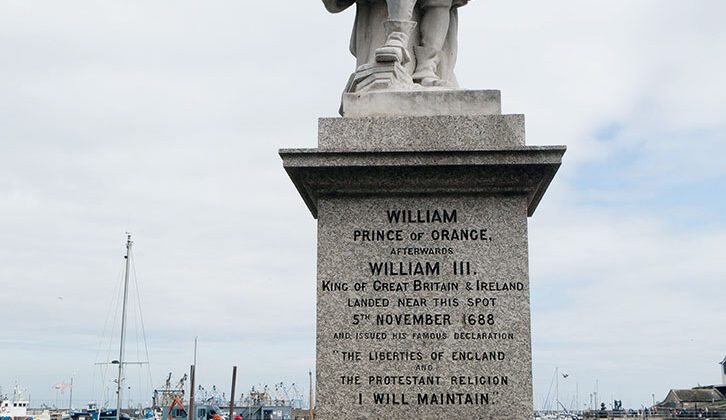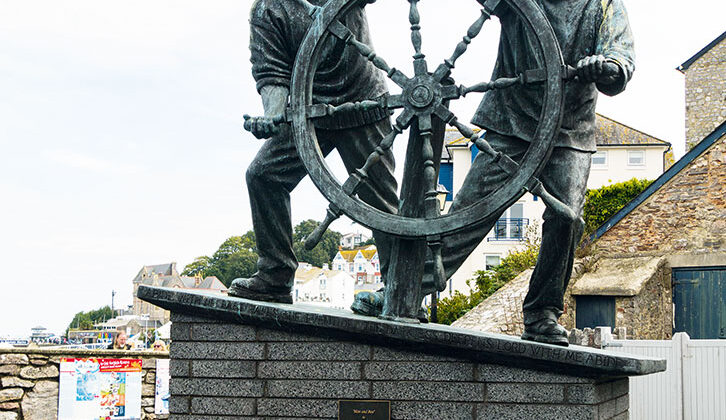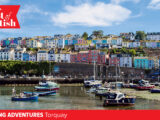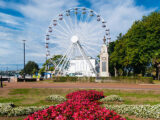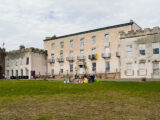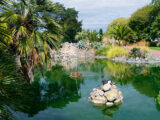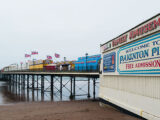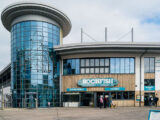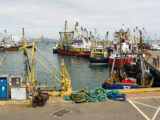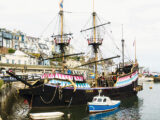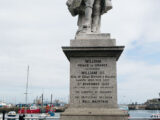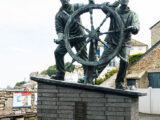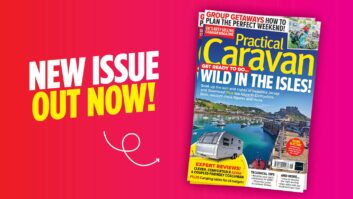On our penultimate trip of the year, we decided to visit the Devon coast.
It is more years than I care to remember since I enjoyed a wonderful family holiday in Paignton, and although we have visited North Devon in the intervening years, that pleasant seaside town is the farthest south I have ever been in the West Country.
Now, with the ever-increasing cost of fuel and parking, we were looking for a site close to public transport, so we could set up and not have to drive again until our departure.
Widdicombe Farm Touring Park, a quiet, adults-only campsite between Torquay and Paignton, appeared to fit the bill, because it advertised a bus route nearby, along with its own minibus service. It’s a site that proved popular in Practical Caravan’s Top 100 Sites Guide, making its way onto our best caravan park in Devon guide.
Although the site was almost 350 miles from our home in North Wales (and if you’re thinking of heading here, be sure to check out our best caravan park in Wales guide), the drive was mainly motorways and dual carriageways, so was relatively stress-free, enabling us to arrive and set up before 5pm.
The following day, we went to reception to book the minibus to Torquay. Luckily, we made up the minimum number of six passengers for the bus to run.
A short time later, we were dropped off at the seafront, to enjoy a pleasurable day in this popular seaside resort.
After wandering through the charming Princess Gardens, past the English Riviera Wheel (open from April to September), it was time for coffee, so we opted for the Offshore Restaurant, in Vaughan Parade.
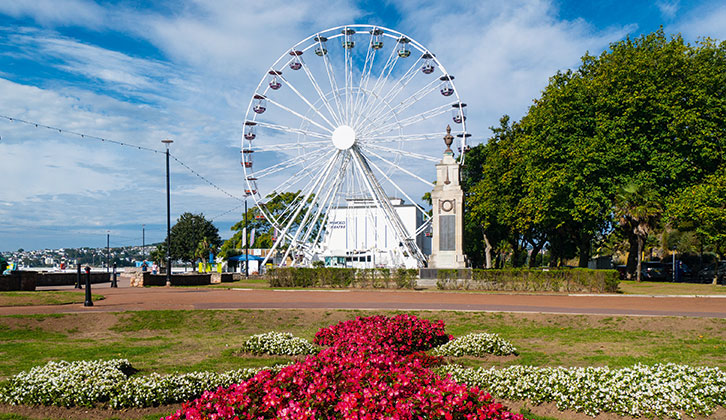
Torre Abbey
Coffee duly enjoyed, we decided to walk around the splendid marina, which was full of expensive-looking leisure craft and very photogenic in the autumn sun.
When it was time for lunch, we decided on Zest Restaurant, in Hoopers Department Store, which turned out to be a very good choice with a great variety of snacks.
Later, we took a stroll in the opposite direction, having planned to spend the afternoon exploring the splendid Torre Abbey and King’s Gardens.
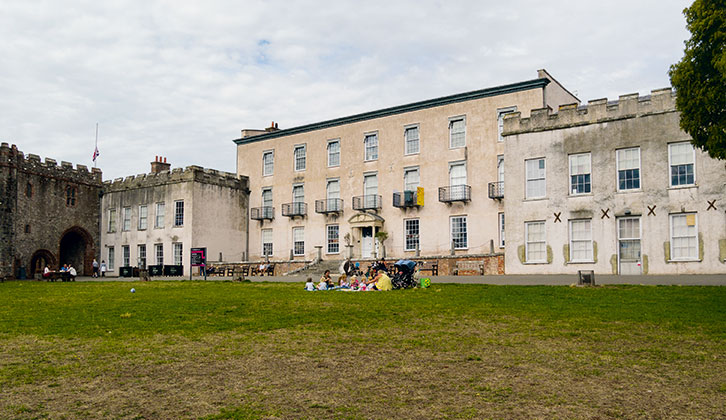
The abbey, now a museum and gallery, was founded in 1196 as a monastery for the Catholic order of the White Canons, and is the best-preserved medieval monastic house in Devon and Cornwall.
Six canons from Welbeck Abbey, in Nottinghamshire, founded Torre on land given to them by William Brewer, then lord of the manor. By 1536 it had become the wealthiest of all such houses in England.
After a succession of owners, the Cary family took possession in 1662, residing at Torre until 1930, when the property was sold to Torquay Borough Council.
The main part of the abbey consists of two Grade I listed buildings and although the church is in ruins, the west and south sides of the cloisters are still standing.
The imposing gatehouse dates from around 1380 and the barrel vaulting above the chapel, which was formerly the guest hall, dates from the 15th century.
The tithe barn, built to store taxes paid to the abbey in the form of grain, hay and other farm produce, became known as the Spanish Barn after being used to house 397 prisoners from the Spanish Armada in 1588.
Contemporary art
Around 1740, the abbey building underwent extensive Georgian remodelling and in the 19th century, the Cary family invested in further reconstruction work, including the development of a small brewery.
Today, it is a fine museum and gallery, home to the third largest art collection in Devon and renowned for regular shows by contemporary artists in its medieval and Georgian rooms. Permanent exhibitions focus on paintings from the 19th century, including work by William Blake and the great Pre-Raphaelite, Edward Burne-Jones.
Torre also houses the contents of Victorian sculptor Frederick Thrupp’s studio, the largest such collection to survive anywhere in the UK.
Its programme of contemporary art exhibitions includes work by Sir Antony Gormley and Damien Hirst, while the annual Torre Abbey Open Art exhibition is a showcase for the south-west.
Situated close to Torre are the formal King’s Gardens, a peaceful spot overlooking the seafront and the fine beach at Torre Abbey Sands, with colourful flower displays and plenty of seats where visitors can pause to take in the panoramic views. It also has a very attractive water feature, surrounded by a profusion of exotic plants.
Well rested, we made our way back along the promenade to enjoy a stroll around the harbour, before picking up the minibus to return to the site for the night. We also booked places on the bus for the following day’s journey to Paignton.
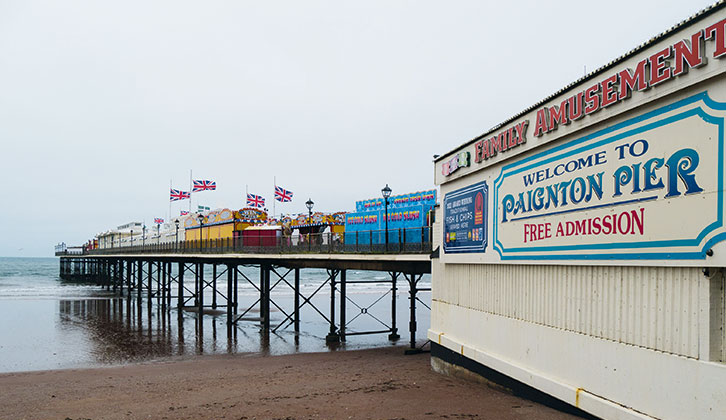
The next morning turned out to be grey and wet, not the sort of day we would have hoped for with just a few days to explore and photograph the area, but with limited time available, we decided to make the most of the visit. Few places look their best in the rain, but we were determined to see what Paignton had to offer.
Seafood a speciality
After being dropped off in the town centre, we wandered along the pedestrianised main street, ducking and diving into shops to shelter from the rain.
We stopped for an excellent coffee at Coffee#1 in Victoria Street, which enabled us to dry out a bit, and later on, had a good lunch at Mollys in Roundham Road, where I fulfilled my need for a crab sandwich. After lunch, we walked to the harbour, then to the famous Pier on Esplanade Road, one of Paignton’s most popular attractions.
Further along, we passed rows of brightly painted beach huts, before turning inland to visit Oldway Mansion in Torquay Road.
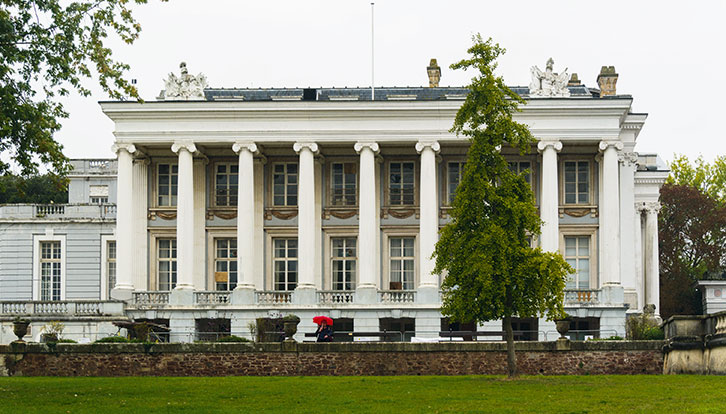
A palatial mansion
This rather imposing building, surrounded by 17 acres of formal gardens, was the home of Isaac Singer (1811–1875), founder of the Singer Sewing Machine Company. It was later rebuilt by his son Paris in the grand style of the Palace of Versailles.
In 1917, however, Paris decided to move to the US, and after 1918, Oldway was no longer the Singer family residence.
Paignton Urban District Council bought the property from the Singer family in 1946 for £46,000 (getting on for £1.5 million in today’s money). Until 2013, the building, which was Grade II listed in 1993, was used as council offices and for civil marriage ceremonies. Sadly, it is currently closed to the public, because it is in a dangerous condition, but the spacious gardens are still open for visitors to enjoy.
Planning to visit Brixham the following day, we looked into the local bus service, but found that it ran from a nearby village, Marldon, which was about a mile away
and only accessible via a busy ring road, which had no pavement for walkers.
We decided instead to take the minibus back into Torquay, where we could catch the No 12 bus for the 45-minute journey from the seafront to Brixham.
Luckily, the sunshine reappeared for our trip to this popular town. Although there was a fairly long queue at the bus stop, we managed to get aboard for the trip to this attractive fishing port, with its busy harbour surrounded by pastel-painted cottages.

Catch of the day
Our first stop was for coffee at The Curious Kitchen in Middle Street, before walking along Fish Quay to the Rockfish Seafood Market. This award-winning restaurant is surely the closest to its source of fish that you’ll find anywhere – its boat, Rockfisher, and other small boats land catches daily, so diners can enjoy fresh seafood overlooking the waters where it was caught.
Moving on, we climbed onto the platform overlooking the fishing fleet. With a strong fishing tradition dating back to the 14th century, by the 19th century, Brixham was home to some 270 trawlers, employing 1600 seafarers and making this the largest fishery throughout England.
It is still England’s largest fish market by value of fish sold, with a record £43.6m being traded during 2021.
The current fleet is a mix of local day boats and large beam trawlers, which stay out at sea for five to seven days, fishing mainly in the Bristol Channel and the Irish Sea. A number of scallop boats also fish in local waters all year round.
The Golden Hind
Moored at Brixham Quayside is the Go,llden Hind Museum Ship, a splendid full-sized replica of Sir Francis Drake’s famous vessel, an icon of the great age of exploration.
The ship has been a popular highlight of Brixham’s picturesque harbour for more than 50 years, providing entertainment and education for thousands of visitors, as well as featuring in TV shows and films.
An all-weather attraction open from spring to autumn, it has numerous indoor displays, as well as decks to explore.
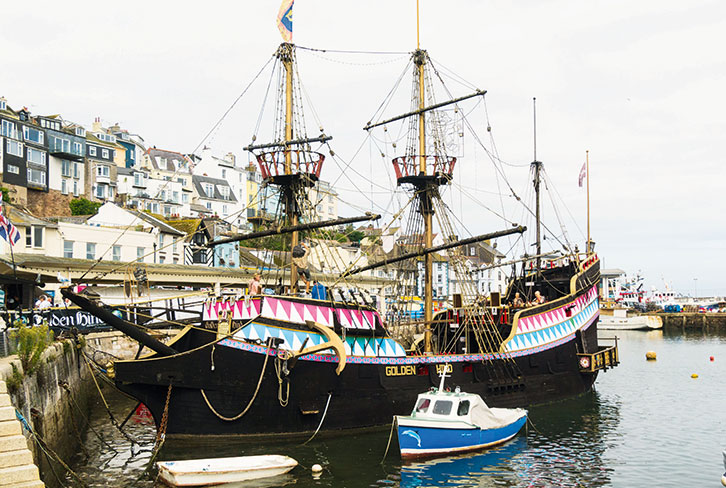
Alongside the ship is the Grade II listed monument to William of Orange, marking his landing with an army on 6 November 1688 in the Glorious Revolution.
The statue, of white marble on a granite plinth, has an inscription stating his famous declaration: “The Liberties of England and the Protestant religion I will maintain.”
We continued on our harbourside walk to King’s Quay and Brixham Marina, where visitors can pause to admire the numerous expensive-looking leisure craft moored at pontoons on the water. This picturesque spot also affords some splendid views back across Brixham town centre.
On King’s Quay, you can also find ‘Man and Boy’, a bronze statue commemorating lives lost at sea and celebrating Brixham’s great fishing heritage.
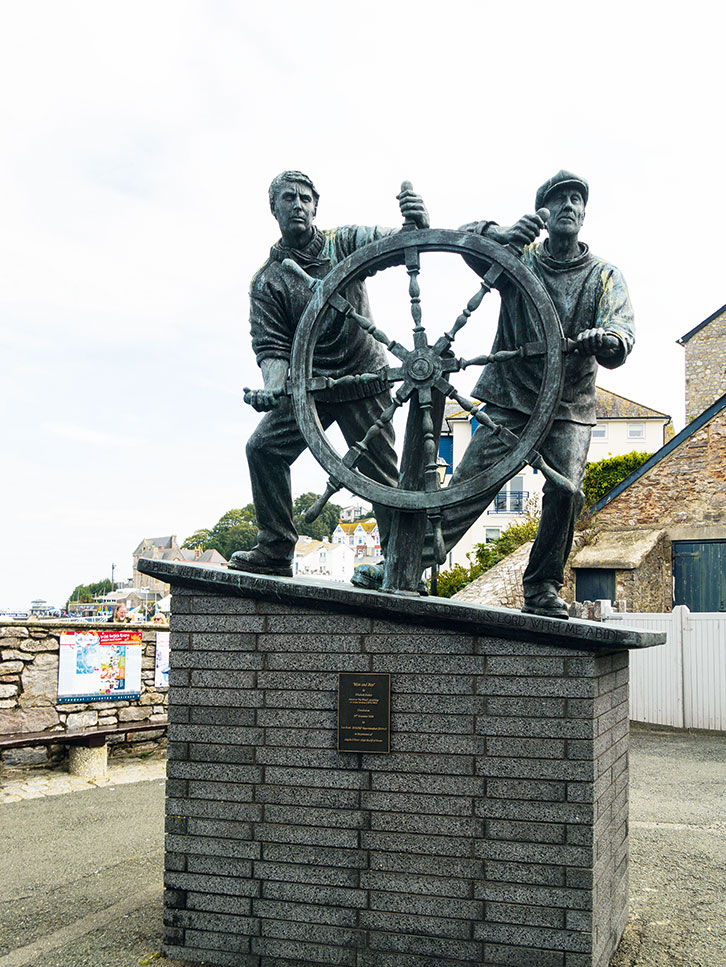
Created initially in clay by local sculptor Elisabeth Hadley and then cast in bronze in Shropshire, the monument cost £76,000, which was provided by local fundraisers.
Based on ‘The Wheel’, an etching by marine artist Arthur Briscoe (1873–1943), it was unveiled in November 2016 by Len Scott, of the Fishermen’s Mission.
At the end of the marina is the coast path to Berry Head, where we stopped to enjoy a good lunch at the Breakwater Bistro.
To the lighthouse
Berry Head Nature Reserve is a magnificent coastal headland that forms the southern boundary of the bay. The lighthouse here has been operational since 1906.
Just a 20-minute walk from King Street via King’s Quay, Berry Head to Sharkham Point is also a Site of Special Scientific Interest. For visitors looking for a coastal walk that offers panoramic sea views but is not too challenging, it is recommended.
It was time to leave the lovely town of Brixham to catch the bus back to Torquay and meet up with the minibus to return for our last night at the campsite.
We decided to try the site restaurant’s takeaway for dinner that evening and were not disappointed – good food, and the helpings were huge, more than enough for the heartiest appetites. The perfect ending before we made our 350-mile trip home.
When to go to Torquay
Torquay is a hugely popular destination, so it can get very busy in the summer months.
Food and drink
- Offshore Restaurant
- Zest Restaurant
- Coffee#1
- Rockfish Seafood Market
- Mollys – 07470 510 979
- The Curious Kitchen
- Breakwater Bistro
Find out more
Where we stayed in Torquay
Address Ring Road (A380), Marldon TQ3 1ST, 01803 556 325
- Open: 14 March to 8 October
- Pitches: 180
- Charges: £30 (adults only)
Minibus service £5.50 per person for the round trip to either Torquay or Paignton; trips to Brixham at weekends with minimum six passengers
Lead image: Andrea Massey
Head to our Best of British: Touring Adventures section for more inspiration for your next trip.
If you’ve enjoyed reading this article, why not get the latest news, reviews and features delivered direct to your door or inbox every month. Take advantage of our brilliant Practical Caravan magazine SUBSCRIBERS’ OFFER and SIGN UP TO OUR NEWSLETTER for regular weekly updates on all things caravan related.
